Reconstructing a lost window - Annesley, Nottinghamshire
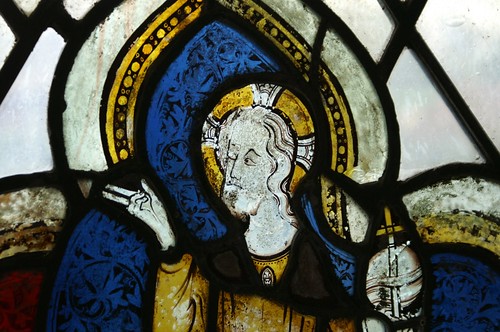

The once glorious church of All Saints in Annesley, Nottinghamshire is now a rather dilapidated ruin. The church ended in such a sorry way as a consequence of the industrial revolution. From the 1850s onwards the population of Annesley migrated to a new village near a coal mine and a new church was built in that settlement. The 'old church' now away from the centre of population, continued to be used occasionally until 1942, but then quickly fell into decay. In 1981 the building was purchased by the local district council and in a remarkable act of vandalism they removed the gables and lowered the walls.
The most striking part of this building was the south nave aisle known as the 'Felley Chapel', which was screened off from the main body of the church. This chapel, dating from the middle part of a the fourteenth century, had a lavish east window with reticulated tracery. A chantry founded by William de Wakebridge and Robert de Annesley in 1363, is believed to have been sited in this chapel, which had all the acoutrements for high mass, including a triple stone sedilia. The patronage of the chantry was vested with the Augustinian canons at nearby Fellley Priory, which is how the chapel is believed to have received its designation.
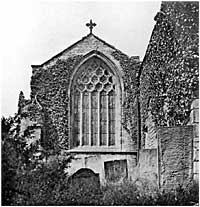
The antiqurian John Allen visited the church in 1748 and he described some of the elements of the glazing of the reticulated east window. Below in italics is his account:
‘In the South Isle, which was built by the Annesleys, and above half of which to the East was a Chantry, still separated from the Rest by a Screen, as well as from the Nave of the Church, on the North Side of the Altar of this Chantry …, in the East Window, which is a very fine one, and has been richly glazed, are the shield and stories still remaining. Over the Crucifix the shield of Annesley.
‘The Nativity, viz. the Stable, wherein is a Cow and a Goat, the Babe in the Manger, the Virgin asleep upon her Arm, and Joseph watching over her: the wisemen offering &c. At the bottom a Man in Armour, praying, on his Surcoat the Arms of Annesley;.
‘and a Shield of the same a little above his Face. A Lady, praying, with a little Girl before her, seemingly on her Coat, viz: the Childs 'Vert, two fesses or'.
This is a useful record. What we appear to have had is a series of narrative panels surrounding a central image of the Crucifixion, with family groups of kneeling donors at the base of the window. The narrative panels were fairly standard fourteenth century fare, the Nativity and the Adoration of the Magi.
By the twentieth century all of the narrative panels and the kneeling donor images had disappered, but remnants of glazing still remained at the tops of the lights and in the tracery of this window. In 1932 these remains were removed by Nevil Truman and transferred to Holme church near Newark, where it was leaded into the east window by Dennis King of Norwich. This glass still survives and gives some indication of the high quality of the Felley chapel east window.
At the top of the tracery lights of the Felley window and now at the bottom of the Holme window, were two quatrefoils containing a Coronation of the Virgin compositon. Our Lady crowned and praying in one light and her son enthroned and blessing her in the second. The colouring of these panels is extremely rich. Both figures are offset against blue grounds decorated with trailing foliage (rinceau) executed in stickwork. The figures make use of pot metal yellow, ruby and murrey glass.
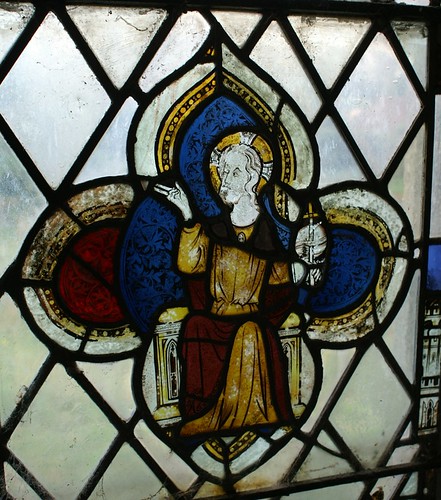
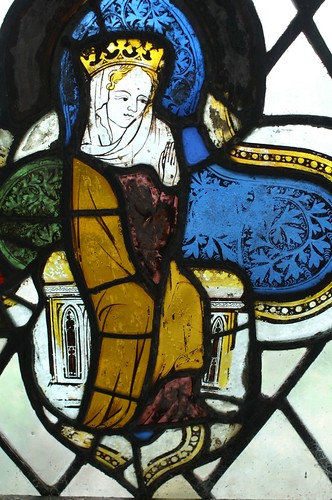
Other tracery lights incorporated coloured armorials set on white grounds painted with rinceau.

The remnants of the filling of the main lights of the window are very scant. Nothing of the narrative panels remains. If other windows of the period are anything to go by, these narrative panels were presumably arranged in bands across the main lights, the bands set against a ground of white glass decorated with a foliage trellis. Nevil Truman was able to salvage a number of the light tops from the window, which give an indication of the type of trellis that existed. Each is decorated with an oak stem and acorn within a yellow border.
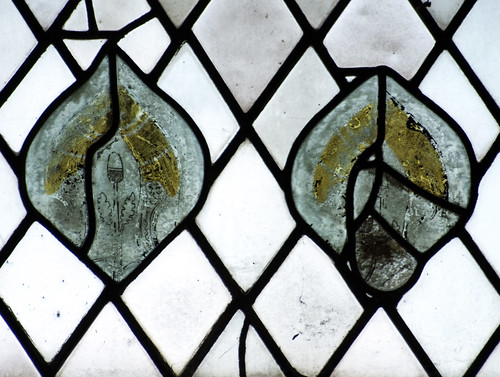
The edge of each light may have had borders of red glass incorporating figurative pieces like this lovely bird and standard decorative elements like vine trail and micro-architecture.


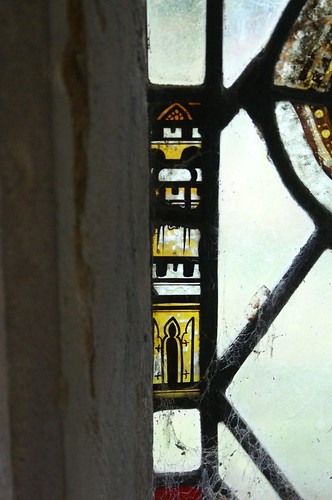
The arrangement of the main lights would have resembled, more-or-less, the east window of the north aisle at All Saints, North Street in York.

Comments